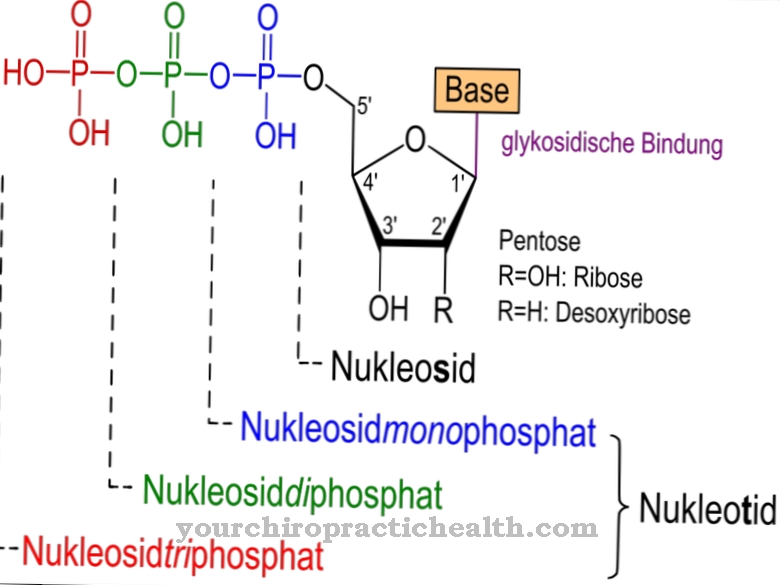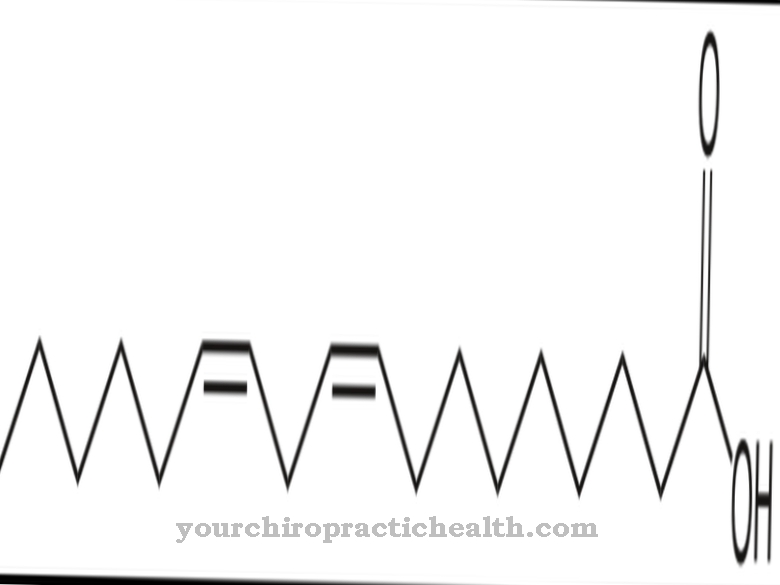lactose (also: Lactose) is a type of sugar found in the milk of all mammals. It is of great importance for the nutrition of babies and is broken down in the body with the help of the enzyme lactase. Lactase deficiency, which can occur after early childhood, can lead to severe digestive disorders when lactose is absorbed in milk or dairy products.
What is lactose?
The term lactose is derived from “lac”, the Latin word for milk, and denotes a sugar that is naturally contained in milk.
It is a double sugar that is broken down during the digestive process by the body's own enzyme lactase into the single sugars galactose and glucose. Because of its comparatively poor solubility in water, the colorless lactose in milk is in crystalline form.
Medical & health functions, tasks & meanings
lactose is one of the main components of milk and as such is essential for the nutrition of the young of all mammal species. As a type of sugar, it quickly supplies the body with energy and, with its sweet taste, also stimulates the appetite.
At the same time, it promotes the absorption of calcium and thereby bone growth. Lactose also supports the formation of a healthy flora in the intestines of infants by inhibiting the reproduction of putrefactive bacteria and at the same time promoting the settlement of healthy bifid cultures. In larger quantities, however, lactose has a laxative effect.
In order to digest lactose, the enzyme lactase is necessary. This splits the double sugar into the single sugars galactose and glucose, which can then be absorbed by the small intestine. During breastfeeding, the body of healthy infants always produces sufficient quantities of this enzyme so that the intake of lactose does not lead to any digestive problems.
With weaning, lactase production can be reduced to up to five percent of the original amount. As a result, the body can no longer use the lactose supplied with food.
Illnesses, ailments & disorders
If lactose can not be properly digested due to a lactase deficiency, this manifests itself with a variety of disease symptoms. Since the lactose contained in dairy products and many other industrially produced foods is not broken down into simple sugars in the upper part of the digestive organs, it reaches the large intestine unchanged.
There it is fermented by intestinal bacteria, which can lead to severe flatulence and diarrhea. Abdominal cramps, nausea and vomiting are also common symptoms of lactose intolerance. More rarely, unspecific symptoms such as sleep disorders, chronic fatigue, depression, difficulty concentrating, as well as headaches and aches and pains can occur.
The inability to digest lactose is not a disease in the strict sense, but actually the normal condition worldwide. In many countries in Africa and Asia, more than 90 percent of people who are beyond infancy do not have the ability to produce lactase and thus break down lactose. The formation of the enzyme necessary for lactose digestion well into adulthood is actually the result of a mutation that is still relatively young in human development.
With the advent of livestock farming, being able to digest lactose offered a decisive advantage, so that this property can now be found mainly in the descendants of corresponding cultures. This is especially true for the inhabitants of Europe and countries populated by Europeans, as well as for some peoples of North Asia and Africa. Nevertheless, an estimated 20 percent of people in Germany suffer from natural lactose intolerance.
In addition, there are various diseases that can inhibit or permanently disrupt the digestion of lactose. These include in particular various diseases of the gastrointestinal tract, such as gastroenteritis, celiac disease, infestation with Giardia, duodenal diverticulum, short bowel syndrome or intestinal lymphoma. Malnutrition or chronic abuse of alcohol can also significantly reduce the ability to digest lactose.
Surgical removal of parts of the intestine, as well as chemotherapy and radiation therapy associated with cancer treatment, also affect the digestion of lactose.













.jpg)

.jpg)
.jpg)











.jpg)